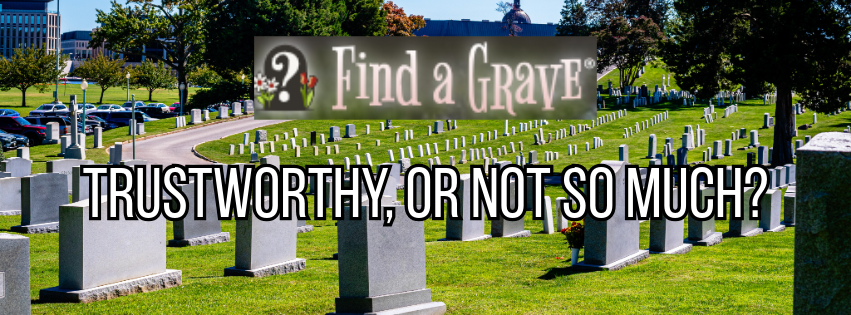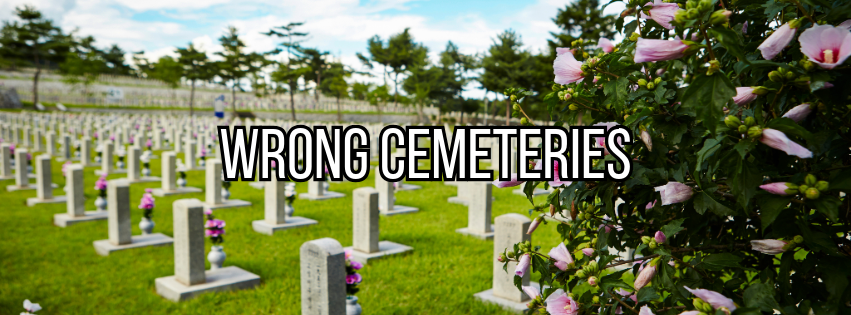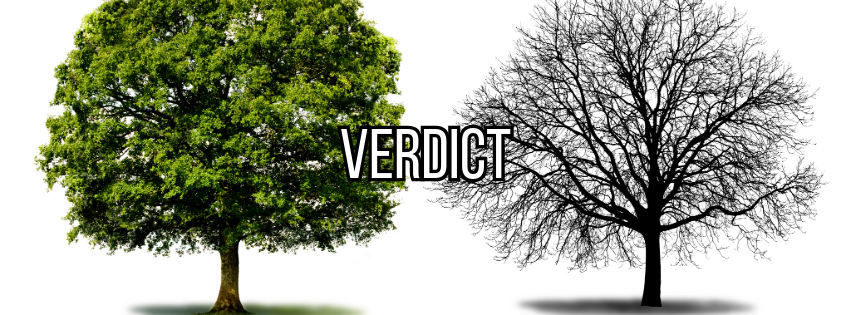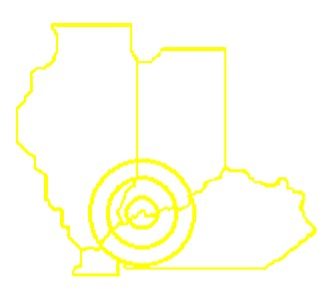
It happens pretty often…someone will tell me about a “fact” that was posted on Find A Grave about their family. As they gleefully share how Find A Grave help them tear down a “pesky brick wall,” I stand by, a little concerned. Why? Because if you’ve spent just a few minutes verifying the information on Find A Grave with primary documents (i.e., censuses, birth/death certificates, marriage records, etc.), you’ve probably noticed that sometimes these supposed facts are, well, wrong. This leads to an important question: is Find A Grave really trustworthy?

When it comes to research, websites can be a valuable tool for genealogists! That said, .gov, .edu, .mil, or other reputable website are always the best places to find information. And Find A Grave? The information provided on burial pages have been submitted by members/users, and since Find A Grave is free to join, there just isn’t a way to easily verify how qualified and experienced these researchers are. In fact, I think we can almost look at Find A Grave as a type of forum, sort of like Reddit or other similar websites. Is it great to see what information others users are sharing? Absolutely! But can we trust what every single person says to be true and factual? Probably not!

While I do think that many Find A Grave members really are doing their very best to provide accurate information, I often find omitted or false information on these pages. One of the most common issues I see is that only certain siblings will be linked on the Find A Grave page, while others are completely omitted–which makes sibling groups seem a lot smaller than they actually were. Plus, while I wish the information was always 100% correct, I can’t count how many times I’ve seen–even on my ancestors’ pages–where a user either shares untruths or half-truths by leaving out important information about my family member. While there might not be ill-intentions, that doesn’t change the fact that leaving out or altering information can have damaging effects on the narrative surrounding our ancestor.

It’s probably happened (or will happen!) to all of us: we hop on our ancestor’s Find A Grave page and notice a photo we haven’t seen before. Exciting, right? While most of these ancestral photos are just that–pictures of our ancestors–this isn’t always the case. Sometimes, I see where Find A Grave users will share a picture of someone who is obviously different from the person memorialized on the website. Just like with false information, users often have the best of intentions, but it doesn’t quite work out. A few days ago, I was researching a local politician from my area and found a “new” picture of him I hadn’t seen before. Upon closer examination, I realized this “new” picture was actually just a photo of a completely different local politician. Admittedly, this doesn’t happen often. But we should all still pause a moment before hastily printing off that picture of grandma or grandpa, just in case we (or someone else) missed a piece of information in all the researching excitement.

One Find A Grave memorial said my Civil War grandfather, Jesse Christmas, was buried in a rural Kentucky cemetery. The other page listed his burial as Andersonville National Cemetery. Which should I believe? During a cemetery restoration project, one Craig Cemetery listed on Find A Grave was said to be in a cow pasture alongside a busy roadway. The other Craig Cemetery was on a rural one-lane country road. Both Craig Cemeteries had the same people buried there per the memorial list. Which is correct?
These are two very real–and pretty recent–examples of what happened to me during research. After a bit more in-depth research, I determined that my grandfather is buried at Andersonville National Cemetery and Craig Cemetery is off a rural one-lane road. While I’m glad I was able to do some additional digging and resolve the issue, I share these stories to highlight another problem with Find A Grave: users can list individuals in the wrong cemeteries completely. This is why verifying all information with outside documents–and doing “boots on the ground” cemetery walks when possible–is crucial.

I’ll be the first to admit that Find A Grave is always in my “recently browsed” history. From genealogy research to writing historical biographies, I use Find A Grave nearly everyday. Yet, that doesn’t mean I think Find A Grave is a 100% accurate, completely trustworthy source. In fact, I think every Find A Grave page should always be thoroughly reviewed by genealogists for accuracy, and a healthy dose of skepticism when you first look at each page is a must.
While Find A Grave is a valuable tool for researchers to have in their “tool box,” that doesn’t mean it’s issue-free. As family researchers, it’s our job to address these issues and make sure we’re spreading only verifiable and accurate information. When possible, it’s always a good idea to (politely) share with other researchers the correct information so that they can right any Find A Grave wrongs, too.
Happy Researching!



